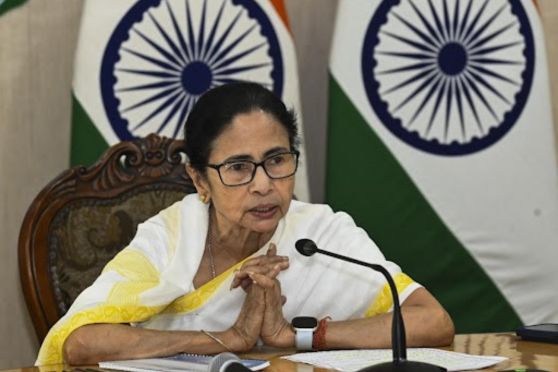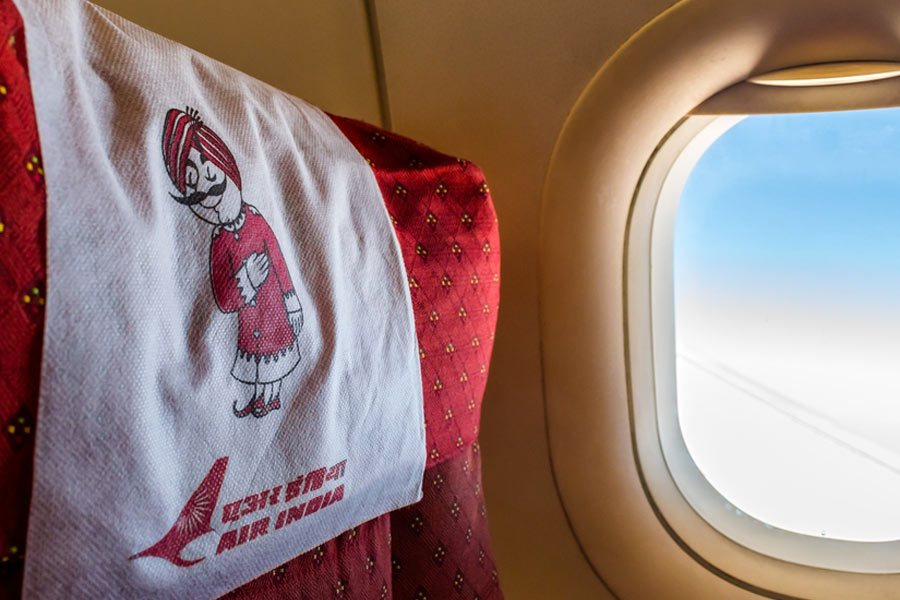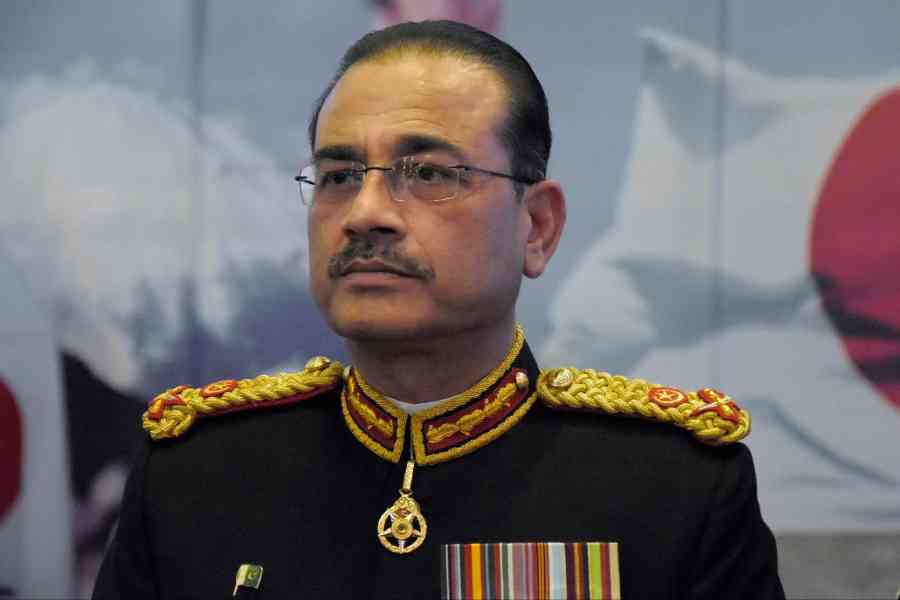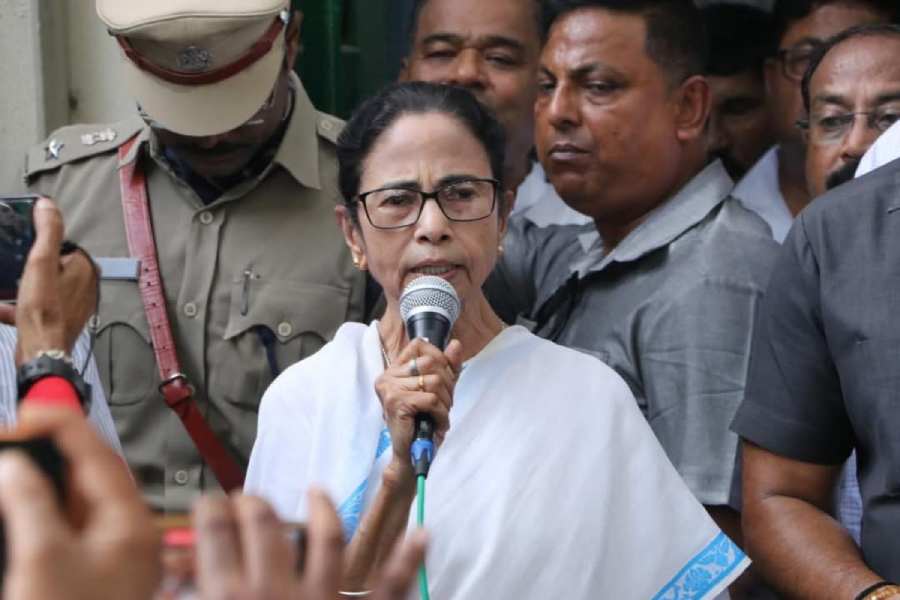Banglar mukh ami dekhiyachhi tai/Prithibir mukh ami khujite jai na aar...
I indeed liked the topic Only Bengali (April 13, Metro). Here are some additions I would like to make:
B for Batela: Big talk. Bengalis are quite good at this so-called dhop mara (fibbing).
C for Coffee House: Manna Dey will remain with us forever. Coffee Houser sei addata aaj-o achhe.
E for Ema: No, not Watson. Expression after doing something wrong.
F for Football: Manna Dey again. Shob khelar sera Bangalir tumi football.
G for Ghorar dim: What an expression! Untranslatable, something that does not exist.
K for Kapiye diyechho: Said when someone has achieved something great or made a great impact.
L for Luchi: Sunday diet.
M for Muri and machher jhol: The best breakfast and lunch respectively.
N for Nandan: Every Bengali wants to visit this place in the evening.
P for PNPC: Paraninda paracharcha (backbiting). Everyone loves it.
S for Syar: Everyone loves being called Syar. Yes Sir!
U for Ulu: The brilliant sound made with the tongue by a shashuri (mother-in-law) when the jamai (son-in-law) arrives.
X for Xerox: For us “xerox” is a verb and photocopying is Hebrew.
Sayantan Dey,
Picnic Garden
B for Buddhijibi: Intellectuals who have an opinion on everything and everyone from Narendra Modi to Dhoni to Paoli Dam.
C for Chirodini tumi je amar: Most popular Bangla song for two decades. From Bengali to Hindi, English to Bhojpuri, Bappida can sing this song in every language.
J for Jhilik: National daughter of Bengal.
K for Khuchro : Dada khuchro deben (please give change) is the most common phrase in recent times.
T for Tormuj: Green outside, red within like a watermelon. Pro-CPM Congress leaders .
Kazi Parvez
B for Bawalbaji: Rowdy fun with friends.
B for Bapi bari ja: A shot made famous by our dear Dada (Sourav Ganguly).
C for Coffee House: Adda hub on College Street made immortal by Manna Dey’s song.
D for Dadagiri: Leadership in the blood of every Bong. Also D for Durga Puja, Didi, Dev.
K for Kasha mangsho: A Sunday must.
Priyanka and Sreyashi
B for Bhoj, Bhuri Bhoj: Feast.
S for Sanghatik: Dangerous. Used to mean fabulous.
A.S. Mehta,
New Alipore
I would like to add the following words to the article:
A for Alu bhaja, alur dom, alu bhaate
E for Ei re!
G for Gamchha, gondhoraj lebu
S for Suchitra-Uttam, that evergreen pair.
N for Nolen gur: Think sandesh.
P for Patali gur
Bharati Bhattacharyya
You have missed out on L for luchi. An inseparable part of our life.
Arjun Bhattacharya,
Brahmapur
I would like to add two phrases:
B for Bhat boka: When someone speaks a lot of rubbish. Example: “Tokhon theke bhat bokchhis, ebar chup korbi (You are talking rubbish for a long time, now will you shut up?)
C for Case khaoa: It is used when someone gets into trouble. Example: Puro case kheye gelam re (I am in big trouble).
Puhabi Das
The article was a pleasure to read. Indeed, Bengalis have a special identity, or rather they used to have one. Nowadays, as Utpal Dutt said in Agantuk, shob-i nimnogami (everything’s on a downslide). Today one hardly hears Bengali spoken properly. A beautiful language has been murdered by the use of English and Hindi words. It has been turned into a language that grates on one’s ears.
Yet, here’s my contribution to the list:
N for Nyalakhyapa: A word which means simpleton, stupid. Tarapada Roy, in one of his short stories, suggests that it could be the khyapami (craziness) of someone called Nyala. Could be. But the exact meaning is hard to pin down.
J for Jogakhichuri: An unlikely mixture, a mess. Khichuri could have served the purpose, one wonders why joga is an appendage. Here too, Tarapada Roy comes to our rescue. A poor beggar called Joga used to live at Kalighat. He was slightly eccentric and collected rice, dal and whatever vegetables he could scrounge from shops. He would then prepare a khichuri which he shared with other beggars. This khichuri was supposed to have been excellent, Joga’s special recipe.
D for Denjaras: Dangerous. Anything can be denjaras.
Prabir Chatterjee
Excellent article. Left me nostalgic and proud to be a Bong. I too would like to add to the list:
C for Caz: Short for casual.
D for Dada/Didi, Dugga Dugga
J for Jhalmuri: No adda can be complete without this snack and tea. Jhaalta ektu beshi kore deben (make it spicy).
H for Handu: Short for handsome.
K for KC Pal: Umbrella-makers. Rain or shine, KC Paler chhata is a must.
P for Paka: Ripe. Oversmart.
Dipayan Dutta,
Narendrapur
It was a real delight going through the article Only Bengali. I would like to add a few words to the list:
B for Bendhe: Similar to rokke.
C for Chaitra sale: Discounts and grand buying spree.
J for Jhalmuri: A must - have in local trains. As popular as phuchka.
Nivedita Gupta
There are many words and things that have a perfect Bengali flavour.
B for Bomkesh Bakshi: Our very own Sherlock Holmes.
B for Bhaat ghum: Siesta, afternoon snooze, specially after a meal. An integral part of many Bengalis’ lives.
C for Chaitra sale: This is the time Bengalis love shopping.
D for Dhaak: Durga Puja without it is unimaginable.
J for Jilipi: Another sweet apart from rosogolla that Bengalis love.
K for Kochuri: Kochuri and chholar dal is an all-time favourite .
L for Luchi: Luchi and alur dom is a popular Sunday brunch.
M for Mishti: Every Bengali has a sweet tooth and loves to have mishti anytime.
P for Paka Buri: An endearing phrase used by elderly people for a young girl acting over her age.
P for Payesh: Sweet delicacy a must on birthdays.
Sangeeta Ghosh Dastidar,
Sebak Baidya Street
Although the list was in every way hebby, here are a few words I would like to add:
A for Alu bhaja: The classic Bengali delicacy which has been served with rice and luchi from time immemorial; lunch isn’t complete without it.
B for Bajar: Literally meaning market, it is anything but. It is the place where buyers meet up for gossip and debate on everything from price rise to the World Cup to the neighbour’s loud dog; everything can and will be discussed. Usually accompanied by a trip to the cha-er dokan. Granddaddy of modern supermarkets and malls.
C for Cha-er dokan: That place where the tea flows and the topics are unending. Biskoot also a must. The classic substitute for the rok; the most notable one being the Coffee House.
G for Ghyama: The perpetual Bengali word which can mean cool or awesome. Substitute for hebby.
Shagnik Barman, Garia
I found the collection of words with varied connotations really interesting. I would like to add a few words that come to mind at this moment.
D for Diabetes: After an overdose of sweets which Bengalis love and have with carefree abandon. Much like ombol or acidity, diabetes or high blood sugar is common among Bengalis.
N for Narkel naru: A sweet made of coconut and jaggery or sugar. No puja is complete without this. A must for Bijoya.
P for Pantabhaat: Boiled rice cooked the day before, eaten with coconut, jaggery or sugar.
P.B. Saha,
Salt Lake
A few more to the list:
C for Cholchhe Cholbe
J for Jabab chai, jabab dao
M for Michhil
R for Rishka or rickshaw
Kannan Iyer
H for Helpery: The word used to describe the work done by a helper or khalasi on a bus or a truck.
Anshuman Bhattacharya,
Santragachhi
Letters on reports appearing in Metro may be sent to:
The Telegraph (Metro)
6, Prafulla Sarkar Street
Calcutta - 700 001
E-mail: ttmetro@abpmail.com










